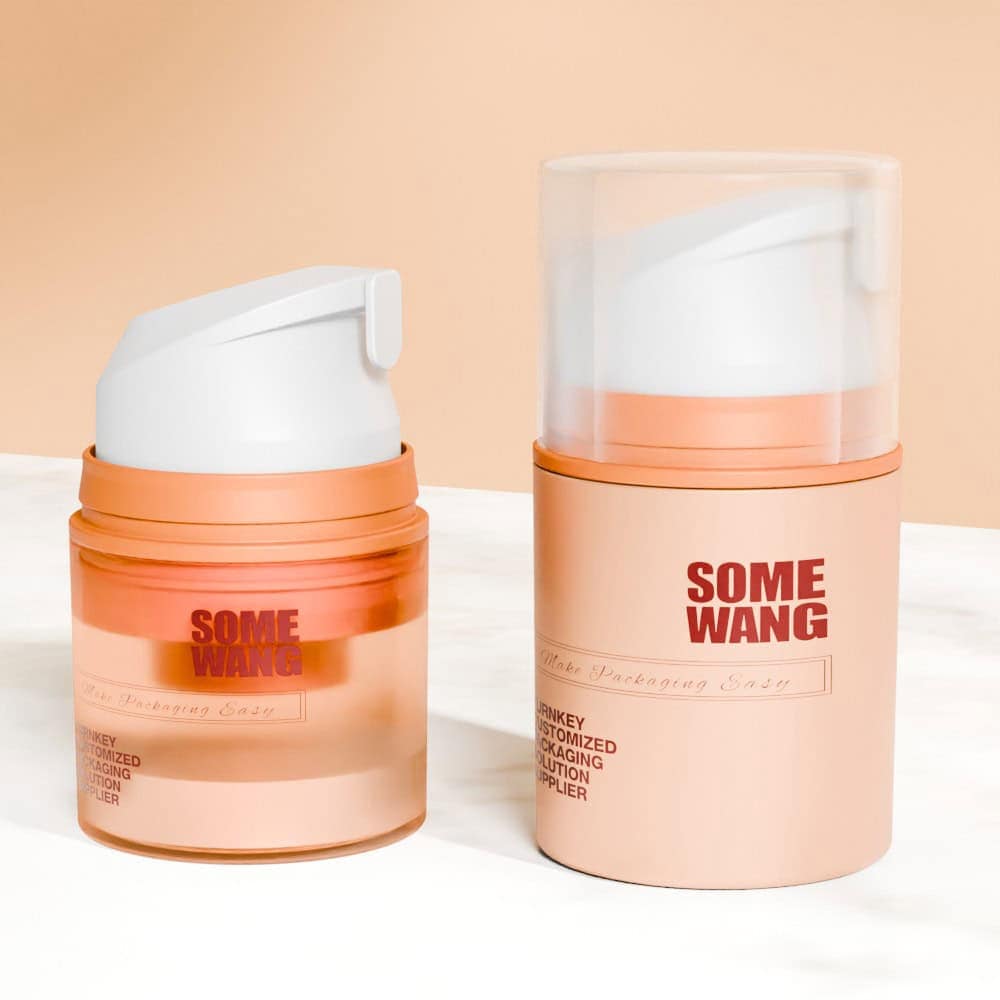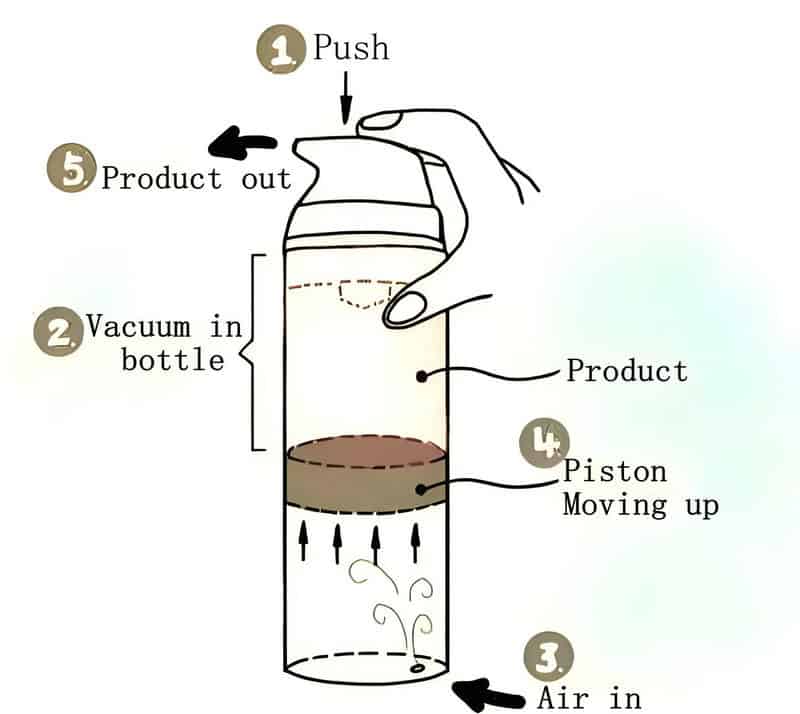
Many cosmetics on the market contain ingredients like amino acids, proteins, and vitamins. These substances are highly susceptible to dust, bacteria, and contamination. Once contaminated, they not only lose their effectiveness but can also become harmful! Vacuum bottles prevent the contents from contacting air, effectively reducing spoilage and bacterial growth caused by air exposure. This also allows cosmetic manufacturers to reduce the use of preservatives and antibacterial agents, providing consumers with greater safety.
Definition of a Vacuum Bottle Container
A vacuum bottle is a premium packaging system comprising an outer cap, a pump mechanism, a bottle body, an internal piston plate, and a base. Its introduction aligns with the latest trends in cosmetics, offering effective protection for product quality.
However, due to its complex structure and higher production costs, the use of vacuum bottles is generally limited to specific high-end or demanding product categories. This makes widespread market adoption challenging, hindering its ability to meet the packaging needs of cosmetics across different price points.
Manufacturing Process
Design Principle

The design of a vacuum bottle is based on atmospheric pressure and heavily relies on the pumping force of the pump mechanism. This pump must possess excellent one-way sealing performance to prevent air from flowing back into the bottle, thereby creating a low-pressure zone inside the bottle.
When the pressure difference between this low-pressure zone and the outside atmosphere exceeds the friction between the piston plate and the bottle’s inner wall, atmospheric pressure pushes the piston plate upwards. Consequently, the piston plate cannot fit too tightly against the inner wall, or friction would prevent its movement.
Conversely, if the fit is too loose, leakage may occur. This makes the production of vacuum bottles highly demanding in terms of manufacturing expertise.
Product Features
Vacuum bottles also provide precise dosage control. Once the diameter, stroke, and spring force of the pump mechanism are set, the amount dispensed per pump is precise and consistent, regardless of the button design. Furthermore, the dispensed volume per pump can be adjusted by modifying pump components, achieving an accuracy of up to 0.05 ml, depending on product requirements.
Once filled, virtually negligible amounts of air or moisture can enter the container throughout its journey from the factory until the consumer uses it up. This effectively prevents contamination during use and extends the product’s effective shelf life.
Coupled with the current trend towards eco-friendliness and the call to avoid added preservatives and antibacterial agents, vacuum packaging becomes increasingly important for extending product shelf life and protecting consumer interests.
Product Structure
Product Classification
- By Structure: Standard Vacuum Bottle, Single-Chamber Composite Vacuum Bottle, Dual-Chamber Composite Vacuum Bottle, Non-Piston Vacuum Bottle.
- By Shape: Cylindrical, Square (Cylindrical is most common).
Vacuum bottles are typically cylindrical or oval, with common capacities ranging from 10ml to 100ml. Their overall capacity is relatively small. Relying on the principle of atmospheric pressure, they prevent cosmetic contamination during use.
The exterior can be finished using processes like metallized plastic, plastic plating, spray painting, or colored plastics. Vacuum bottles are more expensive than standard containers, but minimum order quantities are generally low.
Product components
Key components of a vacuum bottle include: the pump mechanism, cap, actuator (button), outer sleeve, collar (screw thread), gasket, bottle body, piston plate, and base. Exterior components can be decorated via plating, metallized plastic sleeves, spray painting, silk-screening, or hot stamping, depending on design requirements.
The molds required for the pump mechanism are highly precise, so customers rarely produce these themselves. Main pump components include: the piston, stem, spring, housing, and valve.
Other Vacuum Bottle Types
The all-plastic self-sealing valve vacuum bottle features a movable carrier disc at the bottom inside the bottle body. The bottle bottom has an air hole. The disc sits below the product (e.g., skincare) with air underneath it. As the product is pumped out from above, the carrier disc rises continuously. When the product is completely used up, the disc reaches the very top of the bottle body.
Applications of Vacuum Bottles
(1) Skincare Products
- Serums/Ampoules: High-activity ingredients (like Vitamin C, peptides) require protection from light and oxidation. Vacuum bottles isolate air, reducing ingredient degradation.
- Anti-Aging Products (e.g., Retinol Creams): Prevent ingredients from losing potency due to oxygen exposure.
- Sensitive Skin Products (e.g., Repair Creams): Minimize the need for excessive preservatives, reducing irritation risk.
- Sunscreens: Some chemical UV filters are prone to oxidation; vacuum packaging helps maintain stability.
(2) Color Cosmetics
- Foundations/BB Creams: Prevent the formula from drying out or separating (oil/water), ensuring lasting wear.
- Concealers: Avoid oxidation and color change of the product (especially crucial for lighter shades).
(3) Specialty Products
- Sterile Formulations (e.g., Post-Procedure Repair Products): Vacuum bottles prevent secondary contamination.
- Products with Volatile Ingredients (e.g., Essential Oils, Perfumes): Reduce evaporation loss.
